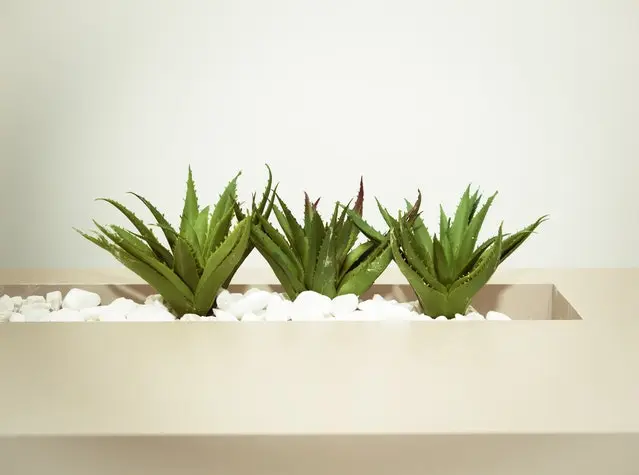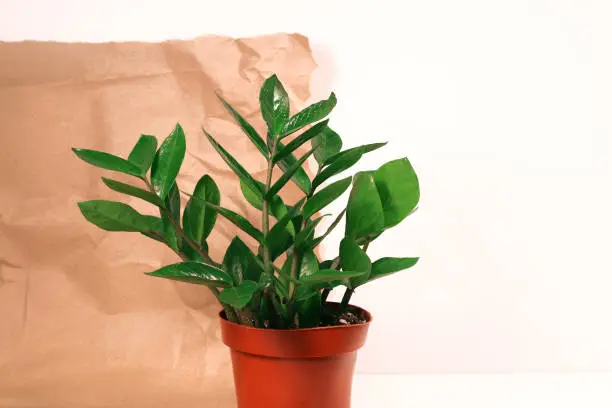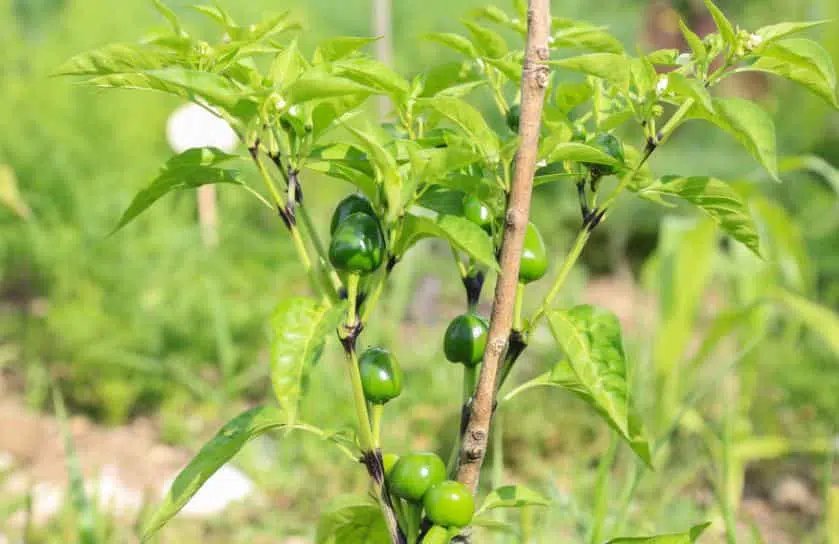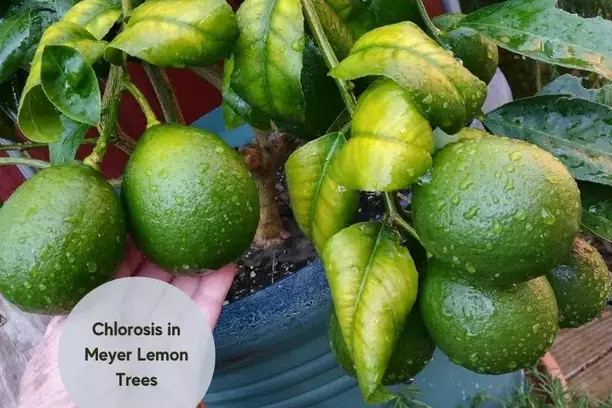Most of the plants we know or come across make their food through photosynthesis where light is an essential requirement. Such plants are known as autotrophs. The purpose of light here is to provide energy for the successful completion of the process. Some amount of energy is then converted into a stored form such as starch.
Even with that being said, some plants still grow and thrive without light by using the stored energy. In most cases, such plants are good for air purification and beauty. Others are found outdoors in low-light areas such as under tall trees. This article examines such plant types and their light requirements.
RELATED: PLANTS THAT ARE BEST FOR AIR PURIFICATION FOR INDOORS
Can some plants grow in the complete darkness?
Some plants can grow in total darkness because they lack chlorophyll. These plants are parasitic in nature. To get their nutrients, they attach themselves to the roots of other nearby plants. Others obtain their nutrients from fungi. Such kinds of plants are referred to as mycoheterotrophic.
Others are not parasitic; they just finish their cycle by growing in the dark when circumstances force them to. Such a situation is when one wants to raise an outdoor plant indoors, forcing it to continue growing even without the much-needed light. This activity has an added advantage because the plant does not form chlorophyll, which is usually responsible for bitter tastes on edible plants.
What plants grow in the dark?
Whereas some plants can grow in total darkness, such as mushrooms, others only require little light to germinate. Such indoor areas with a minimal amount of light are furthest corners of living rooms, countertops of bathrooms, and entrance to the hall.
When choosing plants for this purpose, one should select plants with bright, colorful, and green foliage. These plants need a little amount of water since they naturally do not dry faster than those exposed to light. Also, houseplant food should be applied once in a month as per the directions provided.
Here are some of the best plants that grow in the dark or little light areas:
1. Mushrooms
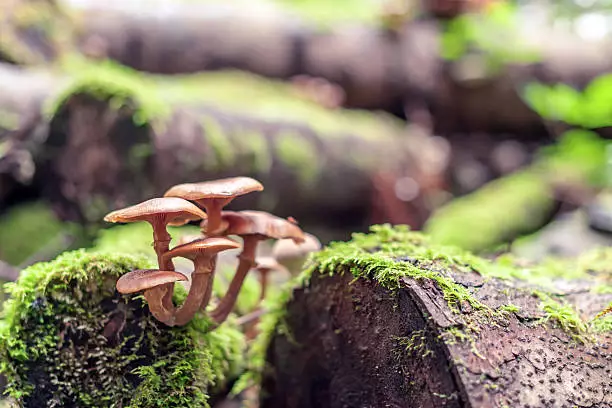
Mushrooms are one of the edible types of plants, however, not all are edible, so one needs to be very careful. They are reproductive structures produced by fungi. They usually grow in humid and dark areas.
Mushrooms get their nutrients from their growing media. Such media include tree barks, wooden logs, sawdust, and moist hays.
Light requirements
Mushrooms do not have chlorophyll; therefore, they do not need light to make their food. That is why they grow effectively in dark conditions. Even with that being said, mushrooms still require a little amount of light to fruit.
Outdoor plants receive some filtered light from the shades of the trees. Indoor plants can be provided with artificial light or indirect sunlight for fruiting purposes.
2. White Asparagus
It is the green asparagus, which is brought up in different conditions. But, the cultivars for growing this variety usually are thicker than for the other ones. It is often not exposed to light by being planted in general dark conditions such as an opaque plastic. It has a fleshy structure with a sweet earthy flavor and a slightly bitter taste.
Light requirements
It is a type of plant that entirely does well in dark rooms. It obtains its white color from lack of light. Typically, the seeds are planted on the production bed 2 inches apart and 0.5 inches deep. To ensure good production, moderate watering should be done at this stage due to the unavailability of light. They take around 12 days to germinate. After the crown grows to a height of about 2 inches, the cultivars can be transferred to dark areas.
3. Aglaonema
It is also called Chinese evergreens. Aglaonema are drought-resistant plants, so they do not require a lot of attention in terms of water.
They have conspicuous multi-colored leaves in shades of yellow, green, pink, and red. With this type of plant in a living room, there is no need for flowers. The primary consideration when choosing this type of plant is the color. The best type that requires a minimum amount of light is the green color.
Light requirements
Many varieties of Chinese evergreen thrive well in shady areas where there is filtered light. For better production, these areas should be frost-free.
4. Forced Rhubarb
It is a type of rhubarb that is grown under light deprivation conditions. By this, the crowns are triggered to produce pale stalks. These are what are used for cooking. It is typically more delicious and softer than the original rhubarb.
Light requirements
It is a type of plant that can be grown in total darkness. They can generally perform well when covered with a giant bin or a container and placed at a temperature of 0 degrees. It uses its own stored energy to develop the stalks. Before it is taken to the dark areas, it is usually grown outdoors first and then transferred where close monitoring is done.
5. Corn plant
It is also called Dracaena fragrans, which look like small palms. The corn plants are loved by many, as they require minimal maintenance. The primary management of this type of plant is watering. It should be done regularly and evenly. The best range of temperatures during the day is 75- 80 degrees and a night temperature of 65 to 70 degrees
Light requirements
It is placed somewhere in the living room that does not receive direct sunlight. It performs best when the indirect light is bright.
6. Spathiphyllum
It is also referred to as Peace Lily. It is a type of plant that is grown in the house in most cases. It has conspicuous white flowers and dark green leaves. In addition to beautifying the home, it refreshes the air keeping the environment healthy.
For better growth, it needs moist soil and humid environs. So, watering and applying mist on the leaves is the primary task when maintaining its growth.
Light requirements
Peace Lily grows well in limited light though it can tolerate inflorescent lights. Also, some varieties perform significantly in total darkness.
Note: The leaves of the Peace Lily tend to turn yellow when placed in areas with strong light, the leaves. Also, the leaves change to brown if the plant is subjected to direct sunlight.
7. Snake plant
Another name for the snake plant is Sansevieria. The best places to place it include; on the stairway, windowless washrooms, and the corners of living rooms. Regular watering should not be done because the plants are succulent in nature.
Light requirements
The ideal amount of light required by snake plants is low indirect light. However, they can also withstand full sunlight.
8. Zee Zee plant
The scientific name of this plant is Zamiolculcas zamiifolia. It is a houseplant that has bright leaves, which brings out a cheerful color in the room. It does not require much attention in terms of maintenance. This is because it only requires small amounts of water and can even be left without water for a few days. An added advantage is that it can still sprout in this condition.
Light requirements
This plant type performs best at low light.
9. Spider plant
This type of plant is best for indoor purposes since it has small beautiful flowers and long gangling leaves. It is a good air purifying agent making a healthy plant to have in the living room. It does not require much attention because it needs less moisture, so watering is occasional.
Light requirements
It is highly adaptable to various light conditions in the house, but it thrives in areas with very little light.
Note: Direct sunlight should be avoided for the significant flourishing of the plant.
10. Wheatgrass
Wheatgrass is sprouted leaves of the wheat plant. It can be grown in either water or soil. To facilitate faster germination, it is advisable to soak the seeds before planting. A consistent harvest is assured if successful planting is done.
It is usually planted due to its high nutritional value since it contains vitamins, minerals, and amino acids. Also, it has a decorative value on indoor gardens. They normally grow very quickly and can be harvested in 10 days.
Light requirements
Wheatgrass requires low amounts of light and minimal temperatures to grow into a healthy plant. The plant should not be subjected to direct sunlight.
11. Parlor Palm
It is an indoor plant that is mostly preferred due to its air purification purpose. It grows slowly and can survive confined spaces. They are usually planted in a container in a few numbers because they have a habit of overcrowding.
Light requirements
Parlor palm grows well in low light areas; that is why they are placed only in places that receive indirect sunlight. Also, one can place them on windows during the morning and evening lights.
Although most plants make their food using light (sunlight) as an essential requirement, others do not require the sunlight at all.
Such plants thrive in areas with low amounts of light or even total darkness. Knowing this helps one provide such a plant with the correct light requirements for maximum performance.
Having described the types of plants that require low light and no light at all, one can choose which ones to propagate as per their purposes.
